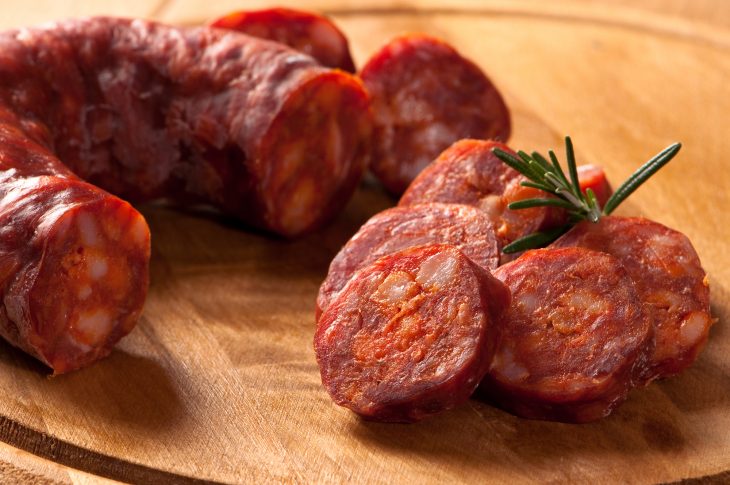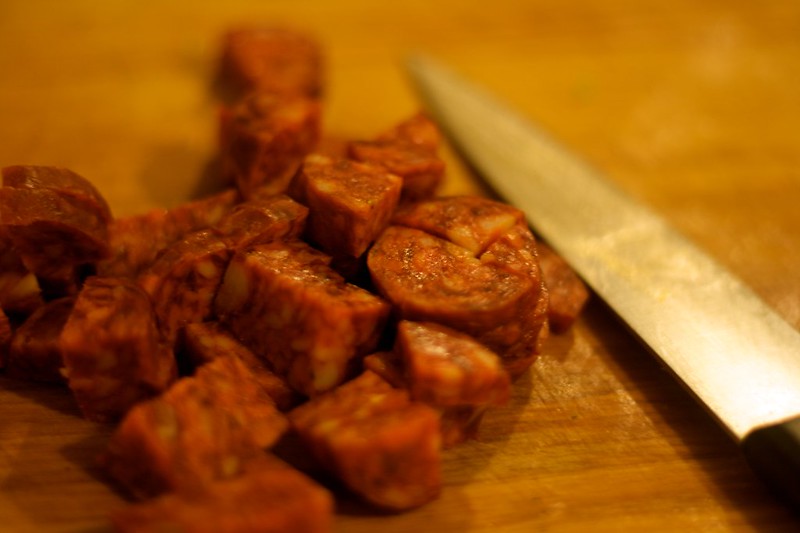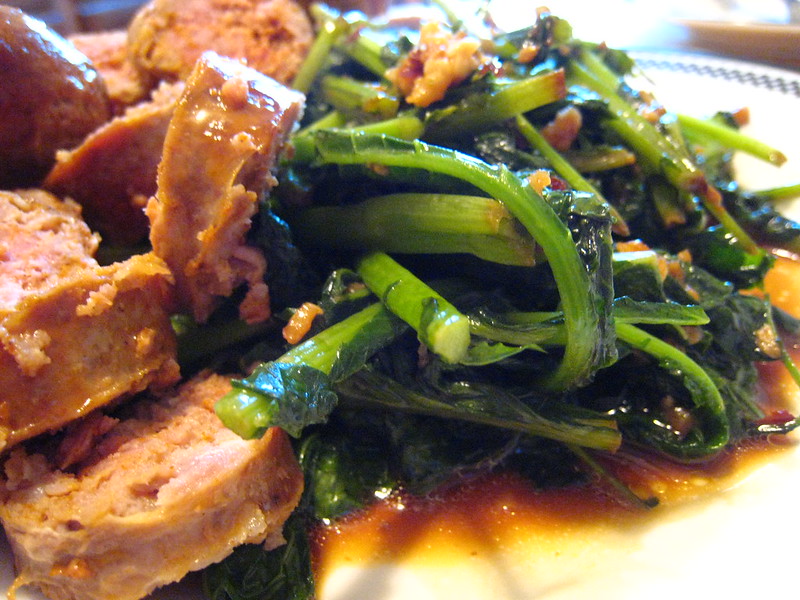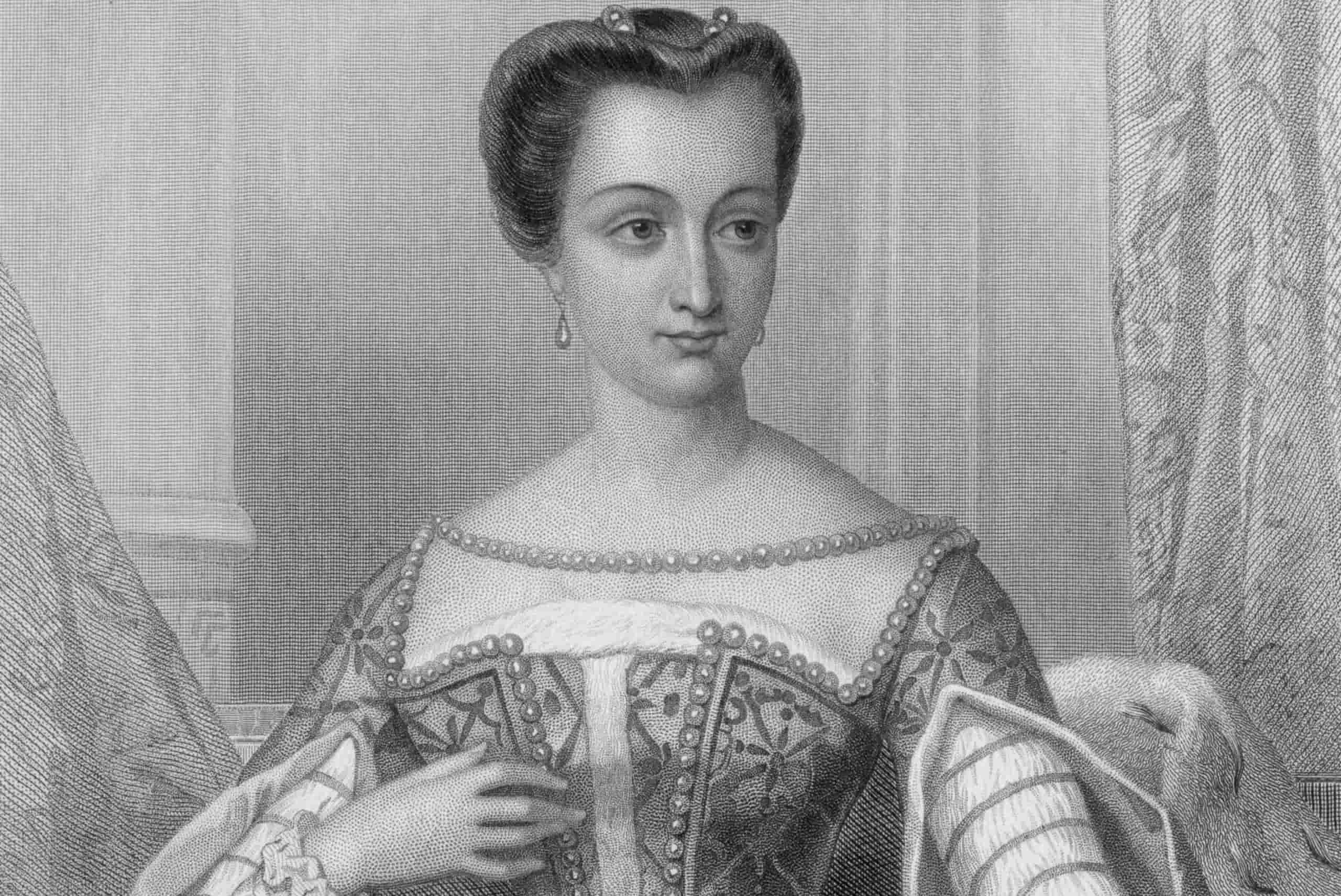
Chorizo, a spicy sausage popular in Spanish and Mexican cuisine, is used as a flavorful addition to a wide variety of dishes. Its bold taste and unique texture make it a special favorite among food lovers. But how does chorizo fare in terms of nutrition? Let’s delve into the world of this spicy sausage and uncover 13 fascinating chorizo nutrition facts.
Origin of Chorizo
The origins of this delicious sausage can be traced back to Spain, where it was first made by the Iberian Peninsula’s ancient Romans. However, the recipe truly began to take shape in medieval Spain, where pork was abundant and readily available. Throughout the centuries, chorizo has made its way to different parts of the world, and each culture has put its own spin on the recipe, resulting in a variety of distinct and delicious chorizo variations.
Main Ingredients of Chorizo
The main ingredients of this delicious sausage are pork meat, fat, and paprika or chili powder. Other ingredients, such as garlic, vinegar, and salt, are also added to give it more flavor. The pork meat is typically ground and mixed with the fat, which can come from various parts of the pig, including the belly or back. The paprika or chili powder is what gives chorizo its distinct reddish color and spicy taste. Whether eaten cooked or raw, chorizo is a tasty addition to any meal.

Chorizo Nutrition Facts
1. Two Main Varieties
There are two main types of chorizo: Spanish and Mexican. Spanish chorizo is a cured, hard sausage, while Mexican chorizo is a fresh, soft sausage typically cooked before consumption.
2. Calorie Content
Chorizo is relatively high in calories, with a 3.5-ounce (100-gram) serving providing approximately 450 calories. The caloric content may vary based on the specific ingredients and preparation method used.
3. Protein Content
A 3.5-ounce (100-gram) serving of chorizo provides between 20 to 30 grams of protein. Protein is essential for maintaining muscle mass, bone health, and various other bodily functions.
4. Fat Content
Chorizo is relatively high in fat, with a 3.5-ounce (100-gram) serving containing around 35 grams of total fat. The fat content largely consists of saturated and monounsaturated fats, which contribute to the sausage’s rich flavor and moist texture.
5. Carbohydrates Content
Chorizo is relatively low in carbohydrates, with a 3.5-ounce (100-gram) serving containing approximately 2 to 4 grams of carbs. However, the carbohydrate content may vary depending on the specific ingredients and recipe used.
6. Sodium Content
Chorizo is high in sodium, with a 3.5-ounce (100-gram) serving containing around 1,000 to 1,200 milligrams of sodium. The high sodium content is primarily due to the curing process and added seasonings.
7. Vitamins and Minerals
Chorizo contains several essential vitamins and minerals, such as:
- Vitamin B12: Important for nerve function and red blood cell production
- Niacin (vitamin B3): Helps convert food into energy and supports healthy skin
- Phosphorus: Essential for bone health and energy production
- Zinc: Supports immune function and wound healing
8. Cholesterol
Chorizo is high in cholesterol, with a 3.5-ounce (100-gram) serving containing around 80 to 100 milligrams. Consuming excessive amounts of cholesterol-rich foods may contribute to an increased risk of heart disease.
9. Cooking Methods
Chorizo can be cooked using various methods, such as grilling, frying, or baking. Additionally, the cooking method can affect the nutritional profile of chorizo, with frying typically adding more fat and calories to the dish.
10. Pairing with Vegetables
To create a more balanced meal, consider pairing chorizo with nutrient-dense vegetables. This combination not only adds color and flavor to your dish but also provides essential vitamins, minerals, and fiber.

11. Chorizo Alternatives
For those looking to reduce their consumption of high-fat and high-cholesterol foods, there are healthier alternatives to traditional chorizo available. Some options include turkey or chicken chorizo, which are lower in fat and calories.
12. Vegetarian and Vegan Chorizo
There are also plant-based chorizo alternatives available. These are typically made from soy protein, mushrooms, and other such vegetarian ingredients. These options are suitable for vegetarians and vegans while still providing the distinctive spicy flavor of chorizo.
13. Moderation is Key
While chorizo is undeniably delicious, its high fat, sodium, and cholesterol content make it a food best enjoyed in moderation. Incorporating chorizo into your diet occasionally and pairing it with healthier foods can allow you to savor its unique taste without compromising your overall health.
Conclusion
In conclusion, chorizo is a flavorful sausage that offers a significant amount of protein, vitamins, and minerals. However, due to its high fat, sodium, and cholesterol content, it’s important to consume chorizo in moderation. Opting for healthier alternatives or incorporating nutrient-dense vegetables alongside chorizo can create a more balanced meal.
Was this page helpful?
Our commitment to delivering trustworthy and engaging content is at the heart of what we do. Each fact on our site is contributed by real users like you, bringing a wealth of diverse insights and information. To ensure the highest standards of accuracy and reliability, our dedicated editors meticulously review each submission. This process guarantees that the facts we share are not only fascinating but also credible. Trust in our commitment to quality and authenticity as you explore and learn with us.


